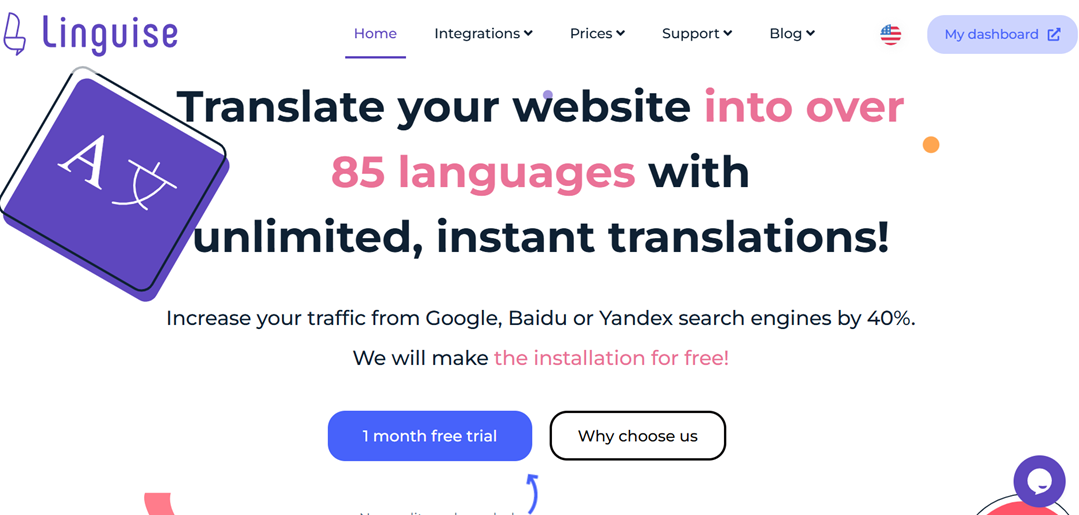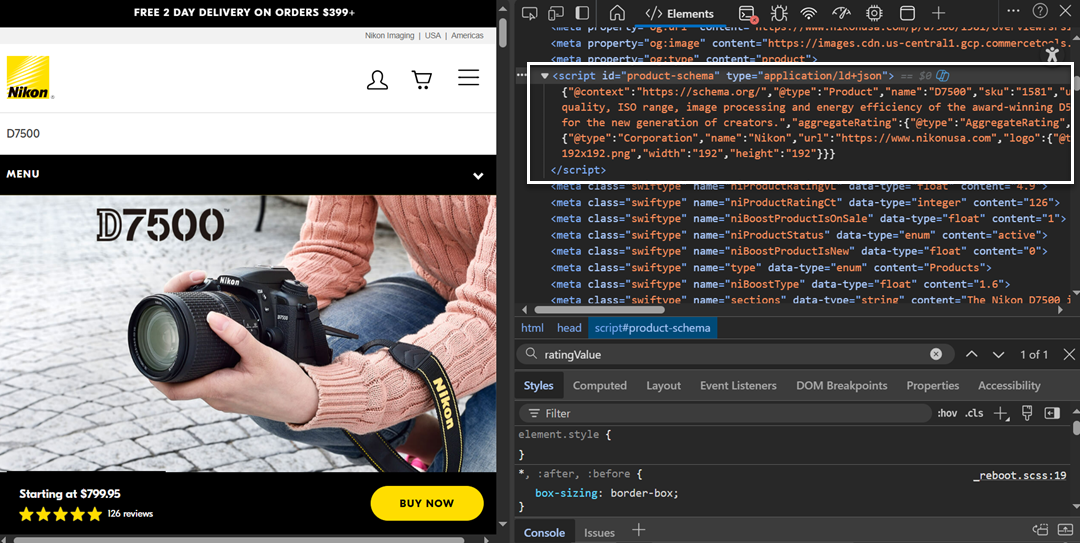Boosting international CTR with multilingual schema markup is a crucial strategy for businesses to increase global visibility and attract more clicks from diverse markets. Implementing schema markup that supports multiple languages ensures that content is relevant to users from different regions and cultures. This strategy combines technical implementation with cultural considerations to deliver an optimal search experience.
Implementing a multilingual schema correctly allows each language version of a website to target its audience. By combining technical best practices with cultural awareness, businesses can maximize the impact of schema markup in global markets.
What is schema markup and why it matter?

Schema markup is a type of structured data that helps search engines understand the content on your website more clearly. Think of it as a labeling system for your pages. By adding schema, you’re telling search engines what your content is about, whether it’s a product, article, event, or review. This extra layer of information allows search engines to display your content in richer formats like rich snippets, knowledge panels, or enhanced search results, which can attract more user attention.
For example, one of the most common and effective implementations is a Product schema like below, where products are displayed in search results along with prices, availability, and user reviews. This type of rich snippet improves visibility and encourages users to click through because the information feels more complete and trustworthy.

Understanding how schema impacts search performance is essential for anyone aiming to improve their website’s reach and engagement. Providing search engines with clear and organized data makes your content more discoverable and clickable.
Why it matters:
- Improves visibility in search results by enabling rich snippets.
- Increases click-through rates (CTR) by making results more attractive and informative.
- Helps search engines serve the right content to the right audience, including international users.
- Supports multilingual SEO by allowing language-specific content to be clearly identified.
Implementing multilingual schema with language targeting

When expanding your website to international audiences, simply translating content isn’t enough. Implementing a multilingual schema with proper language targeting ensures that search engines understand which version of your content is intended for which audience. This helps avoid duplicate content issues, improves visibility in regional search results, and increases the likelihood of clicks from the right users.
Proper use of hreflang and schema language attributes
The hreflang attribute tells search engines which language and region a page targets. When combined with schema markup, you can explicitly define the language of each piece of structured data using the inLanguage property. Example: If you have a product page in English for the US and another in Spanish for Mexico:
{
"@context": "https://schema.org",
"@type": "Product",
"name": "Wireless Headphones",
"inLanguage": "en-US"
}
and
{
"@context": "https://schema.org",
"@type": "Product",
"name": "Auriculares Inalámbricos",
"inLanguage": "es-MX"
}
This ensures search engines display the correct version to the right audience.
Regional adaptations for different markets
Different regions may interpret content differently, even if the language is the same. For example, certain terms, formats, or symbols might be familiar in one country but confusing in another. Adjusting schema to account for regional preferences, like currency, measurement units, or local events, ensures your content is relevant and trustworthy. This helps search engines serve the right information to users based on their location, improving the likelihood of engagement and clicks.
In practice, this could mean modifying structured data to match local conventions. For example, using the offers schema to display product prices in USD for the US (“$199”) and in EUR for Europe (“€199”) ensures accurate regional representation. Similarly, dates, times, and measurement units can be adapted within schema markup to match the expectations of each regional audience, avoiding confusion and enhancing user experience.
Managing content variations across languages
Not all content can be directly translated word-for-word. Sometimes, text must be adapted to make sense culturally, legally, or contextually for a specific region. Using a multilingual schema allows you to mark up these variations without confusing search engines, ensuring that each version of the content is understood correctly and presented in the right context.
Example: Due to local regulations, an FAQ page about shipping policies may have slightly different answers in the UK vs. Australia. Each version can include its own FAQ schema with localized text, helping search engines understand the regional differences while providing users with accurate and relevant information.
To make this process more efficient, tools like Linguise translation can be extremely helpful. Linguise provides high-quality AI-driven translations and ensures that schema markup adapts seamlessly across languages and regions. Unlike manual translations, Linguise automatically synchronizes multilingual content and structured data, saving time while keeping your SEO intact.

International CTR optimization with structured data

Structured data directly affects how your content appears in search results. By implementing the right schema types and adapting them to global audiences, you can significantly improve international click-through rates (CTR). Richer search results grab attention and provide the context users need to choose your website over competitors.
Schema types that drive higher international CTR
Different schema types can influence how users interact with search results across markets. Product, FAQ, Review, Event, and Article schema are among the most effective for driving CTR because they provide additional details, like pricing, ratings, and quick answers, that users want before clicking. When optimized for different languages and regions, these schema types become even more powerful in engaging global audiences.
Example: An e-commerce site selling skincare could use Product schema to display product names, prices, and star ratings. In the US, the schema might show reviews in English with prices in USD, while in Japan, the same schema would include reviews in Japanese and prices in JPY. This localized approach increases trust and relevance, encouraging more clicks.
Enhancing search visibility with international schema
Schema markup makes your content more “search-friendly,” but when optimized for multilingual contexts, it can also expand your reach globally. International schema ensures that different versions of your site appear in search results tailored to each region. This prevents competing versions of your site from appearing incorrectly and ensures users always see the most relevant page.
Example: A travel website could use Event schema for local festivals. The version targeting Spanish speakers in Spain might display “Fiesta de San Isidro” with local event details, while the English version could show “San Isidro Festival” for international tourists. Both appear in relevant searches, but schema ensures the right version is shown to the right audience.
Aligning structured data with global user intent
International audiences don’t always search the same way, even for similar products or services. Structured data can be aligned with user intent by tailoring descriptions, attributes, and highlights to what matters most in each market. This makes the search snippet informative and persuasive enough to increase clicks.
Example: A food delivery service could use the LocalBusiness schema. In the US, the schema may highlight “24/7 delivery” since convenience is key, while in France, it could emphasize “authentic local cuisine” because cultural authenticity drives user interest. By aligning structured data with what users actually care about, businesses improve their international CTR significantly.
Cultural localization in schema markup

By localizing schema to reflect how people search, what they value, and the standards they follow in their region, businesses can build stronger connections with international audiences and improve click-through rates (CTR).
Tailoring schema to local search behavior
Search habits vary widely across regions, even when users are looking for the same type of information. Localizing schema means adjusting structured data to reflect how people search in a particular market, ensuring the content resonates and appears relevant in search results. This includes adapting keywords, content emphasis, and schema properties to match local intent.
Example: A restaurant chain might use LocalBusiness schema. In Japan, people often search for restaurants by train station, so the schema could highlight the nearest station. In the US, users might search based on delivery options, so the schema would emphasize attributes like “curbside pickup” or “24/7 delivery.” Both strategies tailor schema to local search behavior.
Incorporating cultural nuances in snippets
Cultural differences also affect what kind of snippet information feels appealing or trustworthy. By incorporating these nuances into the schema, you can ensure that the snippets speak directly to the values of each market. Depending on the audience, this might highlight sustainability, tradition, convenience, or luxury.
Example: A clothing retailer could use the Product schema. The schema might emphasize “eco-friendly materials” in Northern Europe because sustainability is a strong purchasing driver. In South Korea, the same product schema could highlight “latest fashion trend” because novelty and style are more appealing. Both adjustments create snippets that resonate with cultural expectations.
Adapting schema for local units, currency, and regulations
Technical details like units, currencies, and regulatory requirements differ across regions. The schema should reflect these local standards to ensure the information displayed in search results is accurate and trustworthy. Ignoring these differences can create confusion and even discourage clicks.
Example: An electronics store using the product schema could display screen sizes in inches for the US market and centimeters for European markets. Similarly, pricing would appear in USD ($499) for American users and GBP (£399) for UK users. If a product must comply with EU safety regulations, the schema could include certifications relevant to European audiences, making the listing more credible and user-friendly.
Measuring performance and ROI of multilingual schema

Implementing a multilingual schema is only valuable if you can measure its impact. Tracking performance ensures that your schema strategy isn’t just technically correct but also delivers tangible results in higher international click-through rates (CTR) and improved business outcomes.
Defining KPIs for international CTR
To evaluate the success of a multilingual schema, you first need to define the right key performance indicators (KPIs). CTR is the primary metric, but it should be supported by others such as impressions, average position, and bounce rates from international audiences. Setting these KPIs upfront creates a benchmark for measuring growth.
By aligning KPIs with business goals, you can determine whether your schema implementation is truly driving visibility and engagement across different markets. For example, if the goal is to expand in Europe, tracking CTR for pages with schema in European languages provides a clear performance indicator.
Example: An online bookstore adding multilingual schema might set KPIs such as “increase CTR for French-language pages by 15% in three months” or “double impressions for Spanish-language product pages.” These measurable goals ensure that success is clearly defined and trackable.
Tracking performance with Search Console and Analytics
Google Search Console and analytics platforms provide the most direct insights into schema performance. GSC can reveal impressions, CTR, and ranking positions for multilingual pages, while tools like Google Analytics or GA4 track user engagement and conversions after the click. They give a complete picture of how schema affects the customer journey.
By segmenting data by language and region, you can identify which schema versions are working and which need improvement. This granular approach helps avoid a “one-size-fits-all” strategy and ensures that each language adaptation serves its purpose.
Example: A travel blog using FAQ schema in English, Spanish, and Japanese could compare CTR across these languages using GSC. If Spanish pages show higher CTR but lower on-site engagement, the next step might be improving content quality while keeping schema intact.
Evaluating ROI
Measuring ROI involves connecting CTR improvements from schema markup to real business outcomes, such as leads, sales, or subscriptions. The return on investment isn’t just about traffic volume but also the value that traffic generates for the business.
To calculate ROI, you can compare the costs of implementing and maintaining schema (time, tools, resources) with the additional revenue or conversions driven by increased international visibility. This step ensures that multilingual schema is treated as a strategic investment, not just a technical task.
Example: A case study from Serenity shows that they implemented a local schema (including hreflang + localized structured data) in the German version, resulting in a significant increase in organic impressions and clicks within a few months.
Technical best practices for multilingual structured data in 2025

Managing multilingual schema markup requires a more mature technical strategy, as search engines are increasingly strict about evaluating structured data consistency. By following best practices, businesses can ensure that their implementation is valid and effective in supporting international CTR and boosting global visibility.
Use JSON-LD as the primary format
JSON-LD remains the standard format recommended by Google for structured data. This format is easier to manage because it is separated from the HTML and doesn’t interfere with the site’s main code. In addition, JSON-LD supports automatic updates through tag managers or CMSs, making it more flexible for multilingual websites.
Using JSON-LD also simplifies integration with schema.org, which continues to evolve. With a single set of JSON-LD, you can update markup across multiple languages without risking HTML inconsistencies.
You can easily spot JSON-LD when inspecting a website’s source code, usually placed within a <script type=”application/ld+json”> tag. Below is an example of how JSON-LD looks in action:

Keep schema markup consistent across language versions
Consistency is critical to avoid confusing search engines. Although content varies in each language, the schema structure must remain the same. For instance, if the English version of a product page uses the Product schema, the German or Japanese version should also use the same schema type.
Inconsistent schema across languages can cause ranking discrepancies or prevent rich snippets from appearing in certain search results. Consistency sends a strong signal that all versions of the page represent the same entity.
Add the inLanguage attribute for each language
The inLanguage attribute helps search engines understand the language used in the content. This is especially important for multilingual sites so that Google and Bing can display results aligned with the user’s language preference. Without this attribute, content may be shown incorrectly across languages.
Beyond languages, inLanguage also supports regional codes (e.g., en-GB for the UK and en-US for the United States), which enables more precise targeting. This is essential for international markets with similar languages but regional differences.
Combine schema with hreflang annotations
Hreflang and schema markup work hand in hand. While tag hreflang tells search engines which language or regional version of a page should appear, schema ensures that the content is understood semantically. Combining both strengthens internationalization signals, allowing search engines to deliver the most relevant results.
Using both also minimizes the risk of duplicate content across languages. Search engines recognize that different pages are language variations, not duplicate content.
Validate multilingual schema with rich results test and Search Console
Validation is a critical step to ensure the schema works as intended. Google’s Rich Results Test and Search Console can detect errors, preview rich snippets, and flag missing attributes. This process helps guarantee that schema is functional across all languages.
Validation also allows for ongoing monitoring, so teams can fix issues quickly when Google updates schema requirements. This way, rich snippets remain consistent even as algorithms change. Tools like Linguise offer seamless integration with Google Search Console and Google Analytics to simplify the process. This makes tracking how multilingual schema impacts visibility, CTR, and user engagement across different regions easier, giving you actionable insights while reducing manual effort.
Conclusion
Boosting international CTR with multilingual schema markup it’s a strategic approach to making your content globally relevant and competitive. By combining accurate structured data, cultural localization, and performance tracking, businesses can ensure their websites attract clicks from diverse markets and stand out in international search results.
Implementing a multilingual schema consistently across languages and regions is key to sustaining long-term growth. Linguise can help automate multilingual content and structured data to make this process faster and more scalable, giving your site the best chance to perform globally. Start using Linguise to maximize your international CTR.




